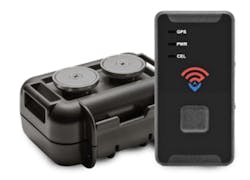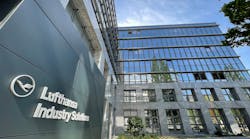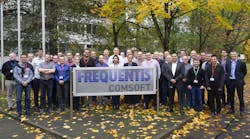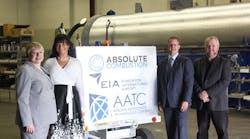The last 5 years have generated more changes in activity and congestion on airport roadways, curb space and parking areas than in the previous 25 years.
Airports are seeing rapid and significant changes in the business models used by commercial vehicle operators, the types of vehicles used, who is driving, activity levels, and changes in passenger’s preferences for ground transportation options.
A significant part of these changes is from the introduction and improvements in available technologies that help airport management deliver better customer service while maintaining reasonably equitable treatment of the providers.
When an airport is contemplating a ground transportation management system (GTM), a major consideration is tracking vehicles and/or drivers as they enter, pick-up, drop-off, move around, and exit the airport campus. By tracking this driver/vehicle data, airports can get extremely valuable insights into daily operations and long-range planning.
The question is: What tracking technology to use?
The answer, like most choices we face today is “it depends.” Of course, this answer is not particularly helpful, so here’s a proposed framework to help airports work their way through the decision process.
Technology Options
The good news is that Airports have several technology options, but before comparing the pros and cons of the various technologies, let’s look at five key requirements that likely drive an evaluation of the best tracking option for your needs:
- Why is tracking needed? A GTM system can be used for a variety of purposes including improving roadway/curb congestion, automated dispatch, airport regulation compliance, and collection of trip-based fees. Is it important for you to track these types of things?
- What to track? The technology is available to track the vehicle, the driver, or both. Which of these does your airport need?
- Real-time vs. historical data? Some system uses (i.e. automated dispatch, balance tracking for trip fees, access control, etc.) require real-time processing of data, other uses such as monthly reporting can schedule transmission and processing of the data. What are your priorities?
- Physical layout of roadway and curb? The complexity of the roadway system and curb locations will influence the equipment and infrastructure needs. Do you need multiple vehicle detection points?
- Volume of activity? The number of drivers and/or vehicles to be tracked will also influence the technology decision. Do you have a high, medium or low volume?
Tracking Technology Options
Several primary technologies are currently available to monitor/control the movements of commercial vehicles/drivers on or off airport property. Each can be an effective solution, but each has a set of attributes that demand consideration when choosing the option that is best suited for your airport’s needs.
The following is a summary of the vehicle tracking technology options:
- Bar Code. First to be used in early GTM systems due to its very low cost and ease of deployment. However, its relatively short read distance and rapid deterioration in weather limit its continuous use for GTM systems.
- Proximity Cards. Wide adoption in parking systems (primarily employee and tenant parking). While it typically has a longer read range than does bar code technology and is more durable, it requires the vehicle to be stopped and the driver to accurately position the card next to the “reader”. In the past the cost of the tag/card has been lower than RFID, but recent technology advancements in RFID have almost eliminated this cost differential.
- Radio Frequency Identification. Characterized by accurate detection at longer range and greater speeds than bar code or proximity cards. Over the last 25 years it has been the choice of airports in more than 90 percent of GTM systems installed in the U.S. It is still the technology of choice for many, however, new technologies have gained momentum due to some significant benefits.
- Low Energy Beacons. One of the newest technologies to be used for tracking. This technology was developed for a wide variety of consumer marketing products, but it is being adapted for tracking vehicles in much the same way as RFID: place a device (beacon) in each vehicle and install one or more detection devices (sensors) where you want to detect a vehicle. Advantages include a much larger detection area that eliminates the need for a vehicle to “pass” a sensor, and almost no infrastructure requirements. Still in the early adoption stage, this technology holds significant promise.
- License Plate Recognition (LPR). Creates images of each vehicle that passes the camera and then interprets the alpha and numeric characters which make up the unique ID on the vehicle’s license plate. This unique ID is then used in the GTM system to track the movement of the vehicle. It is used in a large number of parking revenue control systems (PRCS) at airports and is likely to be used more extensively in GTM systems in the future. The accuracy of vehicle identification was less than expected in many of the early systems (e.g., less than 90 percent of all characters on the plate license plates were accurately read or interpreted), but technology advancements have now made this a more viable option.
Global Positioning System (GPS). Widely available to track the movement and location of vehicles. It is based on the use of messages from a smart phone or a dedicated GPS device installed in the vehicle. In either case, messages are created and sent from the vehicle on a frequent basis. Special messages are sent for “events” such as a passenger pick-up or drop-off. This is being used by airport operators to track, generally in real-time, the movement of commercial vehicles.
Airports have multiple objectives and requirements for the tracking of commercial ground transportation vehicles and drivers, so they likely will use multiple technologies in a GTM system to take advantage of the benefits of each and eliminate or reduce their limitations.
One example of this approach is for an airport to use RFID technology as the primary source of tracking vehicles and calculating fees and then using GPS technology to track Transportation Network Company (TNC) vehicles. The message data from all tracking sources is sent to the same software.
The selection of the proper vehicle tracking technology will have a major impact on the cost of a GTM system and its ability to produce the desired results. When analyzing the cost and benefits of a GTM system for your airport it is worth considering the “useful life” of the system. While no system lasts forever, our experience is that you can expect 10 to 15 years of use from the system with normal maintenance. The components have few moving parts to wear out and the software is updated regularly with new/improved functions. This makes the cost of the system more of an investment that will increase in value over time.
GRAPHIC
Tracking Technology Comparison
This table compares the major attributes of the primary vehicle tracking technologies. A word of caution: Ratings for each attribute are generalized and not absolute. For example, RFID is not always more expensive than GPS or Beacons will never require infrastructure. For this reason, we have not attempted to quantify the total cost of each type of technology. Costs can be more accurately estimated after selecting which are best for your requirements.
In summary, the need for more comprehensive information on the use of your roadways and curb space has never been more critical to your airport and is likely to be more complex in the future. At the same time, the technology that is available to capture the needed information and help you improve the day to day management of your ground transportation program has made significant progress in improved functionality and is now more cost effective than ever. Perhaps the most important take-away is that airports no longer need to select one tracking technology for all vehicle categories. This opens up the uses of a GTM system and makes them even more valuable.
Lynn Richardson is the President of GateKeeper Systems, Inc. a company that specializes in software development and system integration of products specifically designed for the airport market. GateKeeper Systems has deployed software products to manage ground transportation, employee parking and automate FAA Part 139 Airfield Inspections at more than 90 airports.
Before starting GateKeeper Systems in 1997, Lynn spent 20 years at the Metropolitan Airports Commission in Minneapolis, MN as Director of Finance and then as Deputy Executive Director.
Mr. Richardson is a Certified Management Accountant and has an MBA from Minnesota State University.




